Sea Snails, Ostracods, and the Oldest Penis on Earth
 November 2, 2019
November 2, 2019
You’ve probably never heard of an ostracod. Why would you? It’s a tiny creature, about the size of a mustard seed, and nothing much more than a head. It is not exactly the thing that many divers go looking for when they are out on the reef. While ostracods are not popular, they truly are fascinating. Since one (above) was recently photographed on Pulau Hantu’s reef, we thought this would be the perfect opportunity to dedicate a post to this seemingly benign creature. Above photo: Toh Chay Hoon
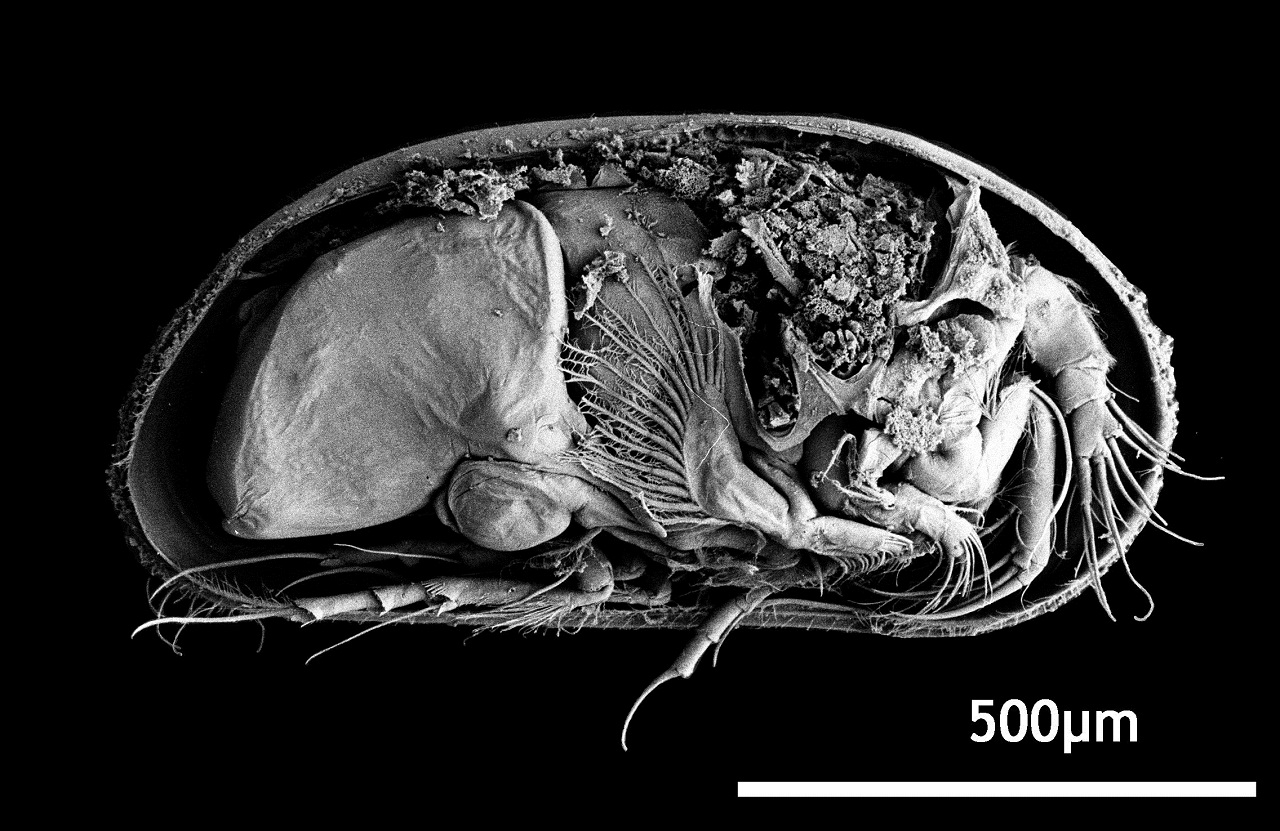
Ostracods are crustaceans. This photograph reveals the animal within its shell. Image: Keyser, Dietmar
Ostracods are crustaceans. If you’re like me, you’re probably scrolling back to the photo above and wondering how that little white disc with a black tail (it’s actually a single antennae) could be a crustacean.
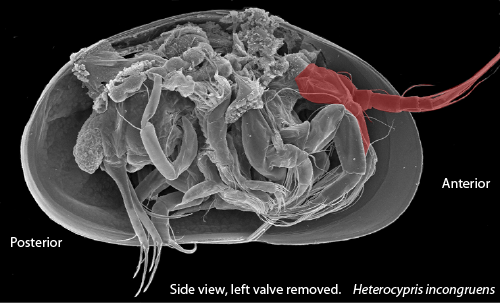
Ostracods consist of little more than a head. Tucked inside its little shell are two pairs of large, bristly antennae used for swimming and an assortment of mouthparts. It is completely absent of an abdomen (the part of a prawn that is draped over sushi).
While not too popular in the rest of the world, ostracods, or umihotaru in Japanese, are a little revered creature in Japan. If you have travelled across Tokyo Bay in Japan from Chiba to Kanagawa prefecture, you would have come to rest on an island called Umihotaru.

Umihotaru is a rest stop for passengers travelling through the Aqua-line, an underwater highway in the middle of Tokyo Bay.
Why should an island be named after a tiny and unpopular sea creature? One group of ostracods, the Terrestricytheroidea, is literally a step ahead of all their relatives because they are able to leave their aquatic environment and wander onto land by carrying water in their shells. But this water has to be replenished, and for that the ostracods have to return to the water. Which is exactly what the commuters on the Aqua-line do when they come up to Umihotaru for a rest.
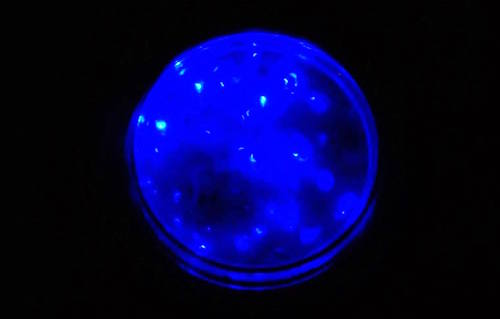
Some species of ostracods produce a bright blue light. This photo shows the bioluminescence of one such species (Vargula) in a small petri dish.
“Umihotaru” (sea-firefly) is more than just a good name for an island in the sea. Some species of ostracods use bioluminescence for courtship displays. What’s fascinating is that different species flicker at different rates, so the ostracods don’t get confused about which blue dot they are swimming toward!
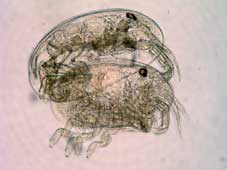
A pair of mating ostracods. With their bioluminescent preamble, ostracods give new meaning to the word “flashdance”.
During the second world war, the Japanese army collected ostracods in traps, dried them out and ground them down to a powder. On the battlefield at night a small amount of water was added to the powder to produce a low intensity light, and used to read orders or maps without giving their position away to the enemy!
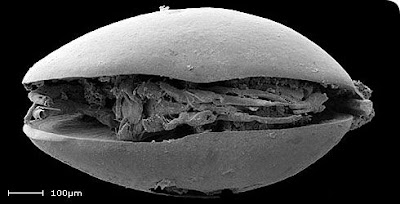
Ostracods are also known as “mussel-shrimp”. Their bivalved carapace may cause you to mistake them for tiny clams or mussels.
Ostracods are one of the most successful groups of crustacean ever to have lived. There are approximately 8000 living species, and they are the most abundantly preserved arthropod in the fossil record. The oldest fossils date back to the Ordovician Period, 485 to 443 million years ago [1]!
It is no surprise then, that the oldest known fossil penis also belongs to an ostracod. Many animals living in the sea 425 million years ago (that is now England) were killed by an ash fall from a volcanic eruption. The ash preserved the animals, including their soft parts (bits that usually rapidly decay). Painstaking 3-D reconstructions of a preserved male ostracod revealed amazing details such as the hairs on limbs, gills and a penis [2].
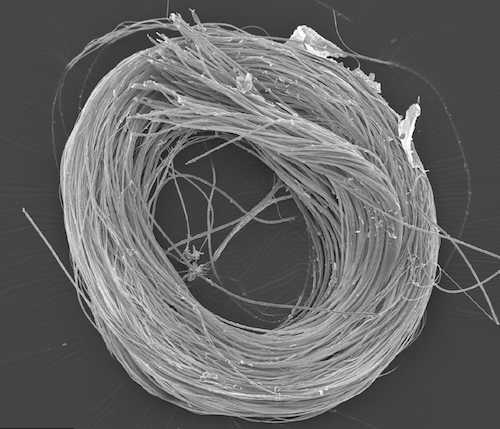
Ostracods are famous for having the oldest known penis in the fossil record, but they also have massive sperm! The species Australocypris robusta, produces sperm that is 3.6 times the length of the male!
The tough shells of ostracods preserve them in more ways than one. Experiments with the ostracod Cypridopsis vidua showed that three out of 10 that were eaten by small bluegill sunfish could survive the passage through the gut of the fish unharmed [3]! The little ostracods closed their shells tightly and waited patiently…
By now you might be wondering what’s all this got to do with marine snails? They are right on the topic of tiny things on Singapore reefs that are easily missed!
The shell of this marine snail doesn’t do much to inspire, but if you take the time to have a look at the rest of the animal…
We are greeted by a remarkable creature, with eyes like ours and numerous translucent antennae to feel its way around the reef (not to mention make an ostracod envious). Pulau Hantu is a remarkable place to discover the weird and wonderful macro world of reefs! Photos of marine snail: Toh Chay Hoon.


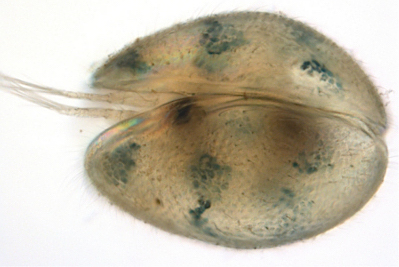

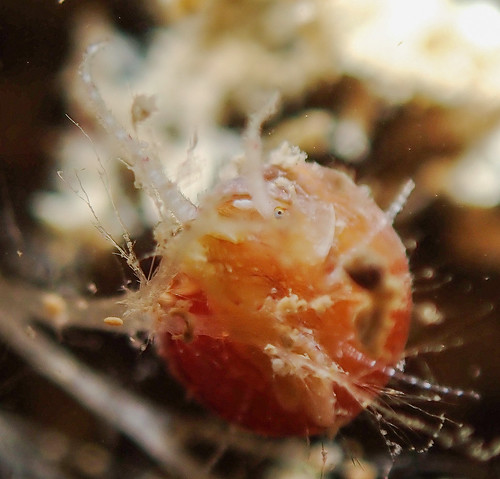
 Posted in
Posted in 



 content rss
content rss
COMMENTS